In places like California, where there are periodic droughts, it makes sense to plant drought-tolerant trees to enjoy all the benefits of planting trees in your yard.
My top 6 picks for the best drought-tolerant trees to plant in California are:
- California Buckeye
- Western Redbud
- California Sycamore
- California Whiteoak
- Purple-Leaf Acacia
- Flame Tree
In addition to identifying those trees that will survive amidst drought, selecting the suitable species requires understanding the environment you are planting into and the tree maintenance needs. This article features the drought-tolerant tree species to consider in Northern and Southern California.
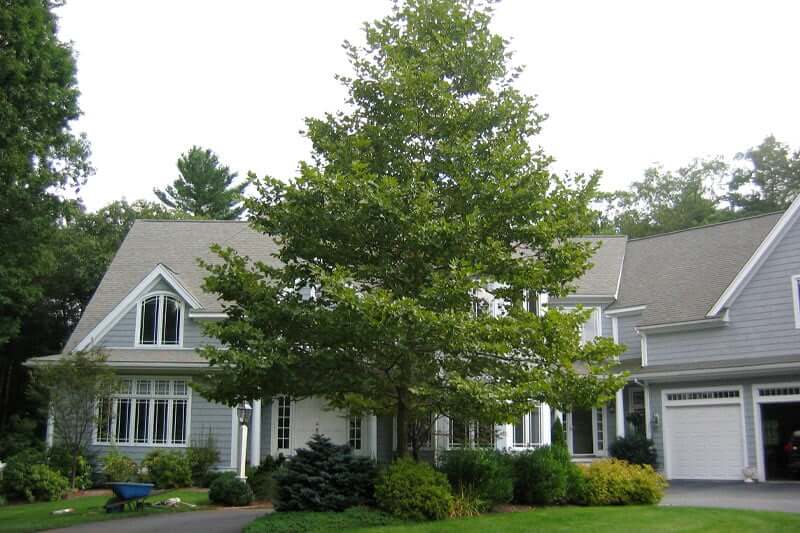
You may want to invest in small drought-tolerant trees for your yard so you don’t have to deal with the tree taking over your curb appeal. There are many trees like this available to choose from, and you may consider the ones listed below:
#1. California Buckeye
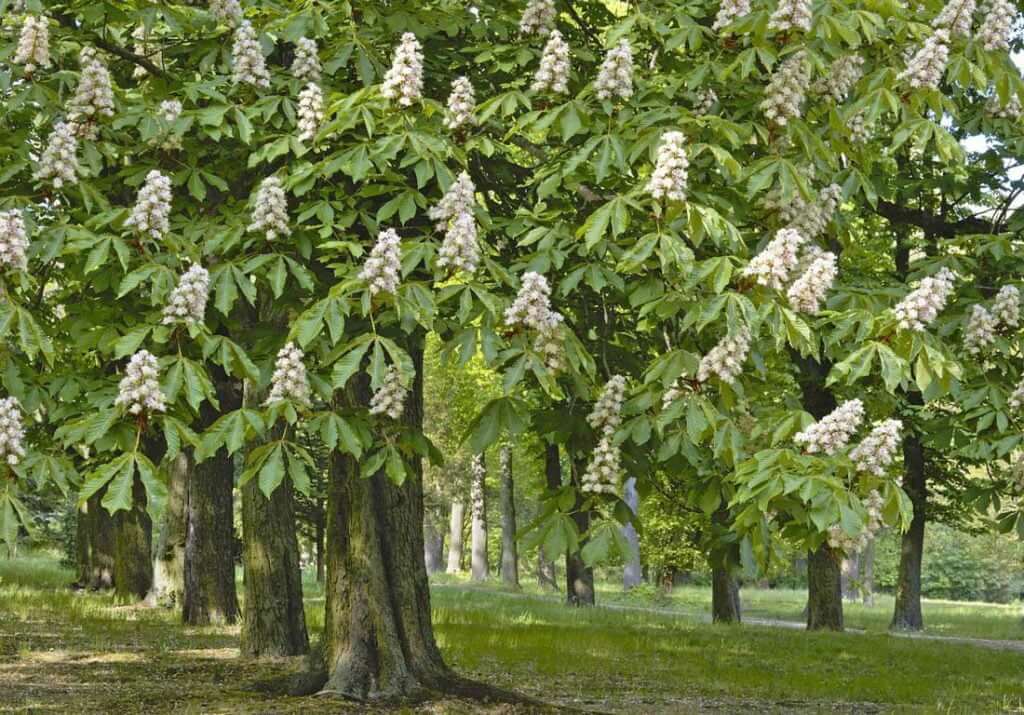
Botanical name: Aesculus californica
Max height at maturity: 13 – 39 feet
Max canopy spread: 15 – 30 feet
Growth Rate: 1 foot per year
Drought Tolerance: Extreme
LifeSpan: 300 years
The California Buckeye is a drought-tolerant tree native to California and only grows around 13 to 39 feet tall. Usually, this tree rarely exceeds 25 feet in height. It is very drought tolerant because it does thrive with little water, most especially the white-flowered varieties.
The fruits from the Buckeye are toxic, so you should keep that in mind when considering this tree. See here for the best drought-tolerant fruit trees to plant in California.
When there’s no supplemental irrigation, the tree usually sheds its leaves in the late summer. The California buckeye is typically used as an accent tree and it provides great shade. You can use this tree to keep your air conditioning units cooler in the summer to help you reduce your home cooling costs.
#2. Western Redbud
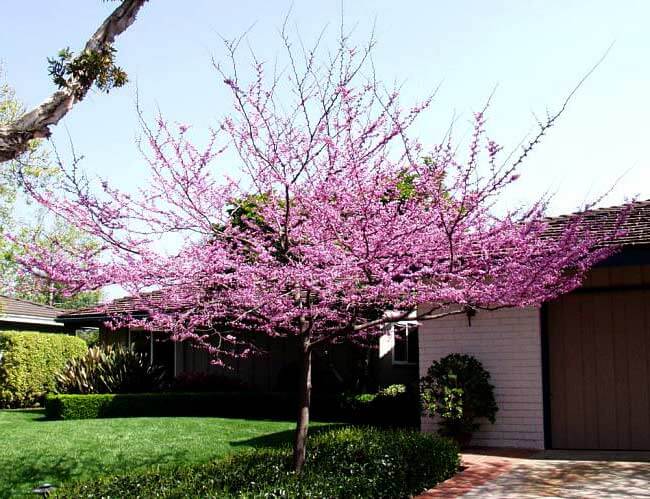
Botanical name: Cercis occidentalis
Max height at maturity: 10 – 20 feet
Max canopy spread: 10 – 20 feet
Growth Rate: 2 – 3 feet per year
Drought Tolerance: High
LifeSpan: 50 – 70 years
The Western Redbud is usually a multi-trunk shrub. It can also be a single trunk tree depending on how you train it to grow. It blooms the best with deep water and full sun but can tolerate drought conditions.
It’s native to California, Utah, and Arizona. It grows to a height of 10 to 20 feet with a spread of 10 to 20 feet as well.
The thin, shiny brown branches of the Western Redbud bear shiny heart-shaped leaves which are light green early in the season and darken as they age. Leaves on plants at higher elevations may turn gold or red as the weather cools.
The showy flowers develop in the spring and are bright pink or magenta, and grow in clusters all over the shrub, making the plant very colorful and beautifying your landscape.
Due to their small size, they don’t work well as shade trees, but they are excellent accent or ornamental trees that also provide significant wildlife value. The Western Redbud also does well in Utah and Texas as a drought-tolerant species.
More drought-tolerant trees for Southern California
#3. California Sycamore
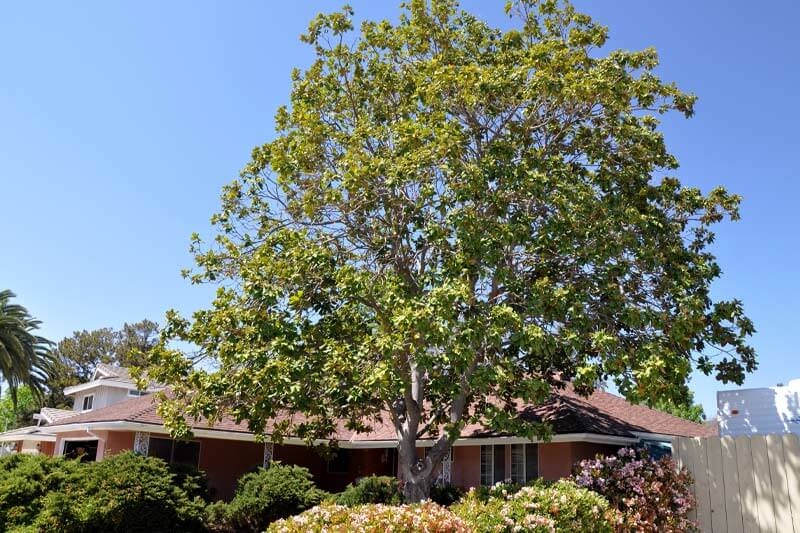
Botanical name: Platanus racemosa
Max height at maturity: 30 – 100 feet
Max canopy spread: 20 -70 feet
Growth Rate: 2 feet per year
Drought Tolerance: Medium
LifeSpan: 150 years
This big and beautiful California native tree is surprisingly drought-tolerant due to its preference for growing in riparian areas. This tree can grow as tall as 100 feet in height with 20 to 70 feet spread. It possesses a very attractive, splotchy bark that includes white, gray, and brown tones.
California Sycamore is a deciduous tree that sheds its leaves in the fall and they make excellent shade trees during the spring and summer. It’s considered to be an ornamental tree as well as a shade tree because of its generous canopy.
The California Sycamore prefers full sun and is drought-tolerant once established. The roots are aggressive, so you should allow at least 12 feet between the tree and sidewalks, driveways, and other structures.
#4. White Oak
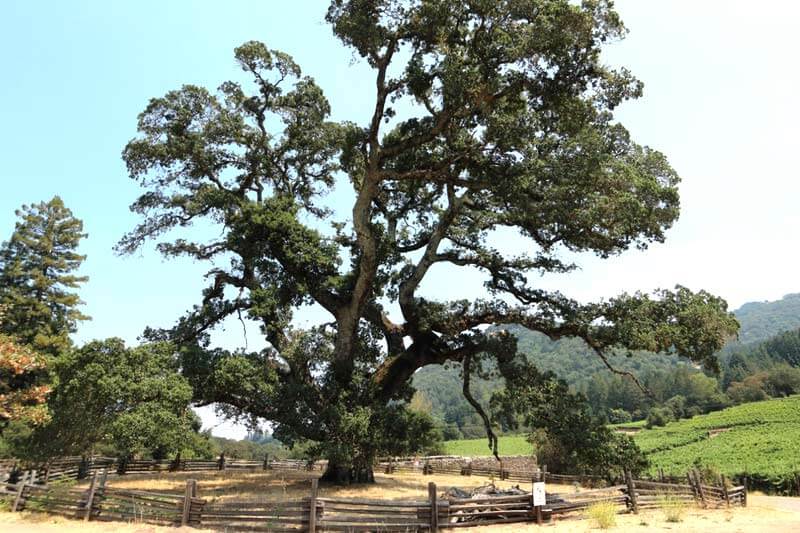
Botanical name: Quercus lobata
Max height at maturity: 100 feet
Max canopy spread: 50 -70 feet
Growth Rate: 2 feet per year
Drought Tolerance: Low
Lifespan: 600 years
This is one of the largest species of oak trees in North America, with a height of 40 to 100 feet and a width of 50 feet at maturity. It is a great shade tree that adds beauty to any landscape.
You can expect it to grow around 2 feet each year in full sun and partial shade. If you’re looking for a tree that lasts forever, the California White Oak is a great choice because it can live for over 600 years.
#5. Purple-Leaf Acacia (‘Purpurea’)
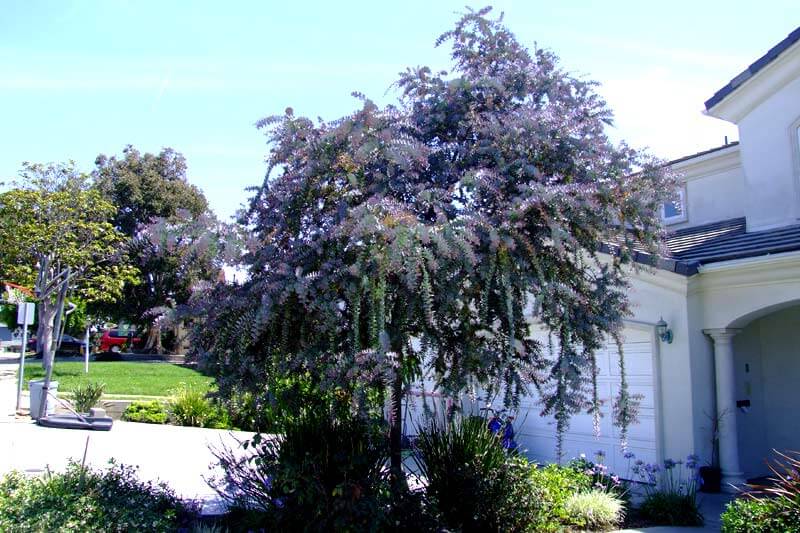
Botanical name: Acacia baileyana
Max height at maturity: 20 – 30 feet
Max canopy spread: 20 – 40 feet
Growth Rate: 1- 2 feet per year
Drought Tolerance: Moderate
LifeSpan: 50 years
The purple-leaf acacia is an attractive tree with smooth bark and green to purple evergreen foliage. It is a fast-growing tree with relatively weak wood, so it is best planted away from homes and areas of high foot traffic. Purple-leaf acacia grows up to 20- to 30 feet in height and is relatively short-lived. It rarely reaches 50 years of age.
#6. Flame Tree
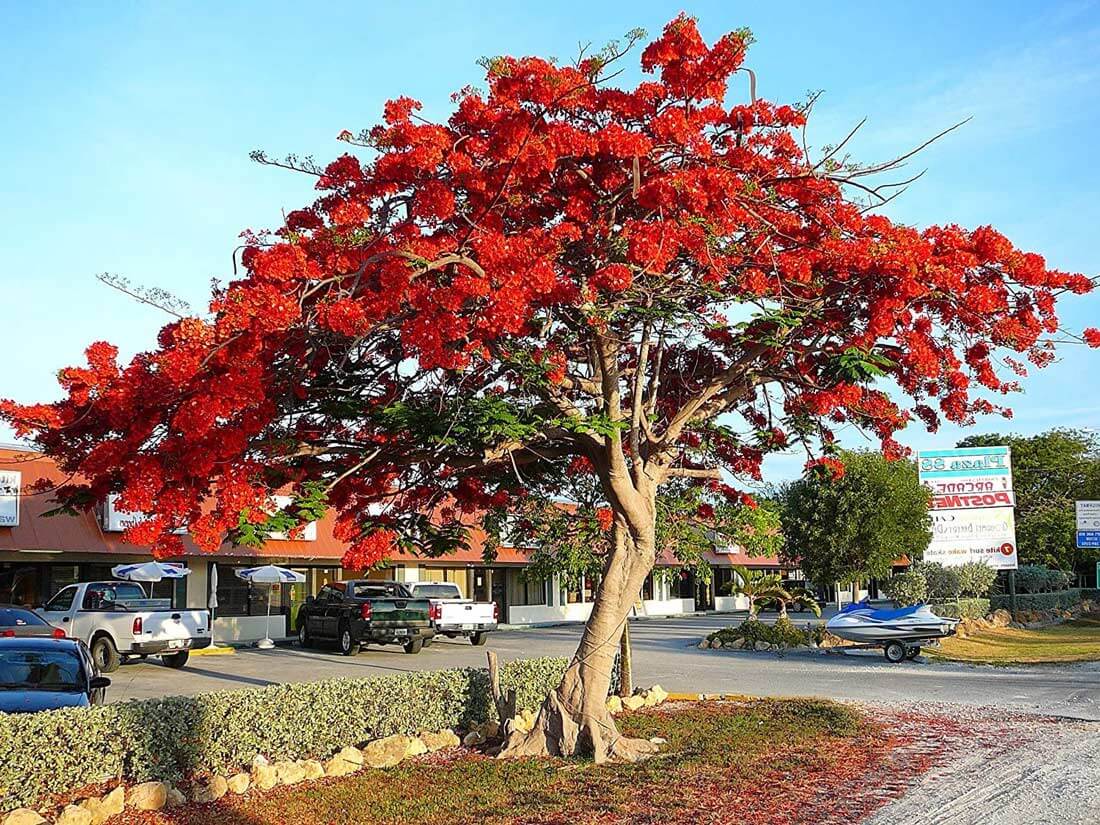
Botanical name: Brachychiton acerifolius
Max height at maturity: 40 -60 feet
Max canopy spread: 30 – 40 feet
Growth Rate: 2 – 3 feet per year
Drought Tolerance: Moderate
LifeSpan: 50 – 150 years
The flame tree is named for its gorgeous orange or red flowers, which usually grace the tree in the late spring or summer. It grows up to about 60 feet in height and they are not suitable for use under utility lines.
The modest spread of the flame tree is usually less than 35 feet and this makes it a great choice for narrow planting locations. The flame tree is tolerant of many soil conditions and sun exposure levels, making it an acceptable choice for drought-prone areas.
Fast-growing drought-tolerant trees in Northern and Southern California
Homeowners and landscapers are increasingly turning to drought-tolerant landscaping as a way to preserve resources and save costs. With the increasing frequency of wildfires in California, the need to conserve water becomes even more critical.
Prolonged droughts are also becoming common in Southern California, so it is important to select trees that can survive with relatively little water for your next tree installation project. Fortunately for residents of the sunniest part of the State, there are many native and exotic tree selections that fit this purpose.
This article specifies the top choices for drought-tolerant trees and shrubs for Northern and Southern California for front yard landscaping, public areas, and landscaping graded/sloped areas.
Wondering how to pick and plant the best drought-resistant trees?
The fastest and easiest way is to get 3 Estimates from the most affordable tree services near you by using this FREE service.
GoTreeQuotes.com quickly matches you with the 3 tree surgeons voted #1 by previous users in your area.
- Scroll up to the top of the page and enter your ZIP Code in the blue form at the top of the page.
- Give us a few details about your tree job plus some contact information.
- Your tree details are forwarded to the closest three tree services all voted best priced who will also price your tree job.




